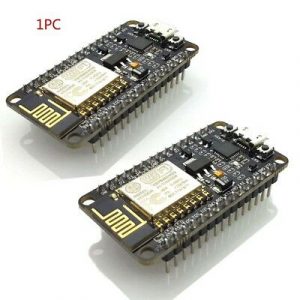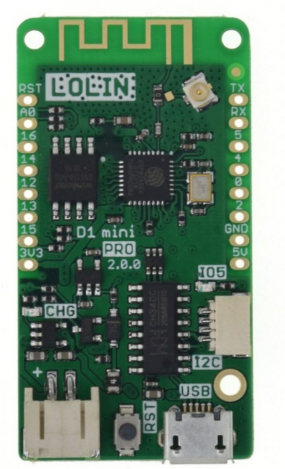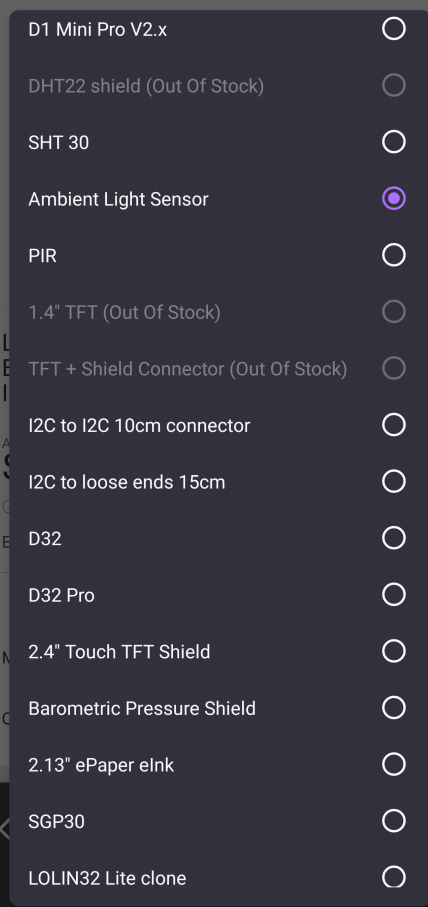ESP8266 is a wifi enabled microcontroller. One of the most helpful ones because of it’s wifi ability and very low cost. This makes the ESP8266 popular in even commercial products that need wifi connectivity.
For development purposes, there are also a lot of variants for this chip. After some preliminary research, there appears to be two most helpful breakout boards for it.
NodeMCU

NodeMCU is technically the name of the Lua-compatible firmware for ESP8266, which later added support for ESP32 (the more powerful, dual-core sibling of ESP8266). NodeMCU was created in 2014 when user Hong committed the first file of nodemcu-firmware to GitHub. but people sometimes use this term to refer to breakout boards using ESP8266 following this particular schema. It comes with additional chips that enable USB-to-serial and other “quality of life” enhancements that make development easier. The breakout board is also compatible with solderless breadboards, making prototyping much easier.
The underlying additional chipset might include CH340 and CP2102. The internet says CP2102 is typically the better choice for compatibility, particularly among Mac Users. However, more recently with better drivers, the two boards are said to be equivalent. It can be coded in MicroPython, Lua, and Arduino IDE. When using it with Arduino IDE using the right board manager and libraries, it basically can run any code written for other Arduino-compatible chips that can fit on it.
There are v2 and v3 variants of NodeMCU boards. V2 has a lot of improvements over V1. However, many feel V3 is inferior to V2 because the entire board has been made bigger, but improvements are minimal.

Wemos Series D1
Wemos series D1 is the other choice. It is not breadboard compatible. The D1 series are a bit confusing. I think there is standard D1 mini which has 4MB flash, and there’s a D1 Pro 16M that has 16mb flash. I think on Aliexpress it is possible to also get a “D1 mini pro 4M” but I’m not sure how that’s different from standard D1 mini. The larger Pro board – not the mini ones – also seem to have connector for battery.


Down side is it does not appear to be Lua scriptable, although Arduino and MicroPython are still options. However, the D1 series also include what seems like a large library of stackable shields that can be applied as well. An example from eBay store is here:

| This post is part of a series on learning about Internet of Things. These posts are mainly a learning tool for me – taking notes, jotting down ideas, and tracking progress. This means they might be unrelated to radiology or healthcare. They also might contain works-in-progress or inaccuracies. |

One response to “Different flavors of ESP8266”